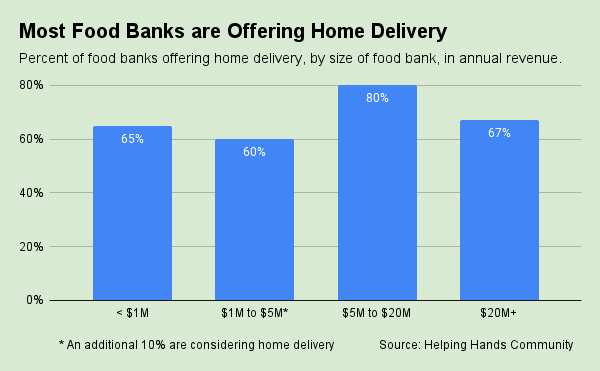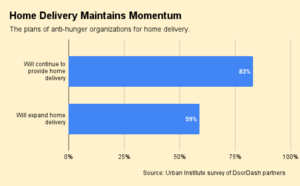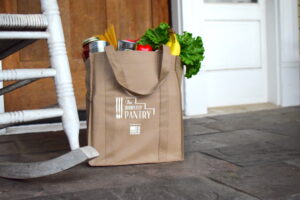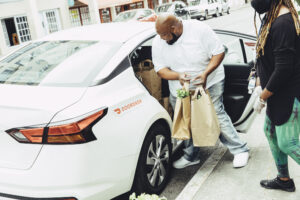A survey of 50 food banks of all sizes found that larger food banks are more likely to rely on technology and operations partners for help in making home deliveries, bringing more efficiency to their programs.
Home deliveries, rarely offered by food banks before the pandemic, have become much more standard as food banks seek ways to expand access to food for people affected by the pandemic. More than 70% of respondents to the survey, which was conducted by Helping Hands Community, a nonprofit technology company specializing in home delivery, say they are already doing home delivery or are actively considering starting a program.
However, all the things that prevented food banks from diving into home delivery before the pandemic – such as the added expense and difficulty of managing the logistics and volunteers – remain relevant today. Affordability and reliability in home delivery have proven challenging to come by, the survey noted.
One pantry-manager respondent said staff members are getting fatigued because they often need to make deliveries after their scheduled shifts when volunteers fail to show up. A program manager at a medium-sized social services organization said it won’t be able to meet increased demand for home delivery because it’s “maxed out” its budget and has not been able to find a partner that “is reliable and delivers in a manner that aligns with our values.”
Despite the difficulties, the need for home delivery remains strong. Even in non-pandemic times, populations including the elderly, the disabled and those in rural areas with no transportation have difficulty accessing food, and food banks say they are making more of a concerted effort to find and serve these groups.
Nearly three-quarters of respondents (74%) said they deliver to seniors, and 62% said they deliver to disabled adults. Twenty-eight percent said they deliver to anyone. Respondents are nearly as likely to deliver produce (92%) as staples and canned food (95%). Only 26% deliver prepared meals.
When it comes to executing their programs, the survey found that larger food banks tend to be more targeted in their approach, delivering to fewer types of groups and offering less variety of food and choice.
They are also much more likely to take advantage of technology and operations help. Food banks with more than $5 million of revenue are more likely to use courier services (often donated) from providers such DoorDash, UberEats or Lyft. They are also more likely to use logistics software to plan their routes. Smaller organizations (less than $5 million of revenue) are more likely to rely solely on spreadsheets to manage their programs.
Thanks to their use of technology, scale and greater access to donated delivery services, larger food banks ($5 million+ of revenue) run their home delivery programs more efficiently, averaging 1,000 to 2,000 deliveries a month, at a cost of $5 to $10 per delivery. Food banks with less than $5 million of revenue average 300 to 500 deliveries a month, at a cost of $10 to $30 per delivery.
Despite the cost, food bankers say they would like to do more with their delivery programs. “We would like a partner that could provide a higher-touch service by providing real-time tracking and communication,” said one. Another “would like to find a way to qualify appropriate clients more easily and meet specific dietary or cultural needs of clients.” – Chris Costanzo
Like what you’re reading?
Support Food Bank News








